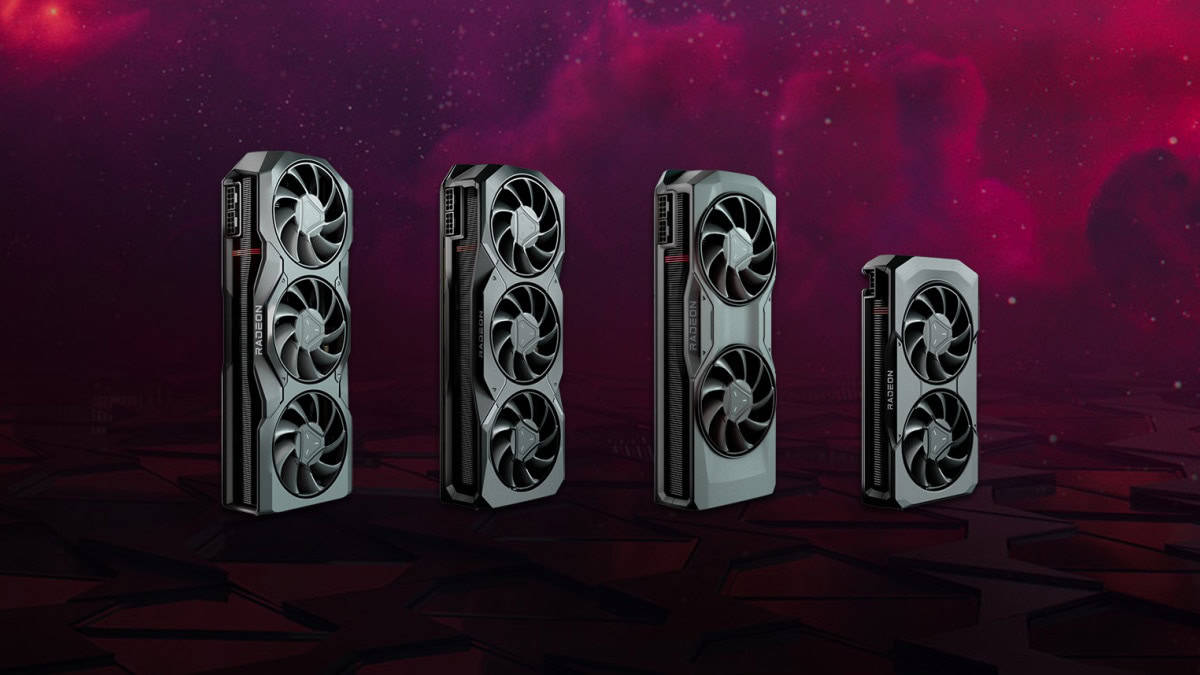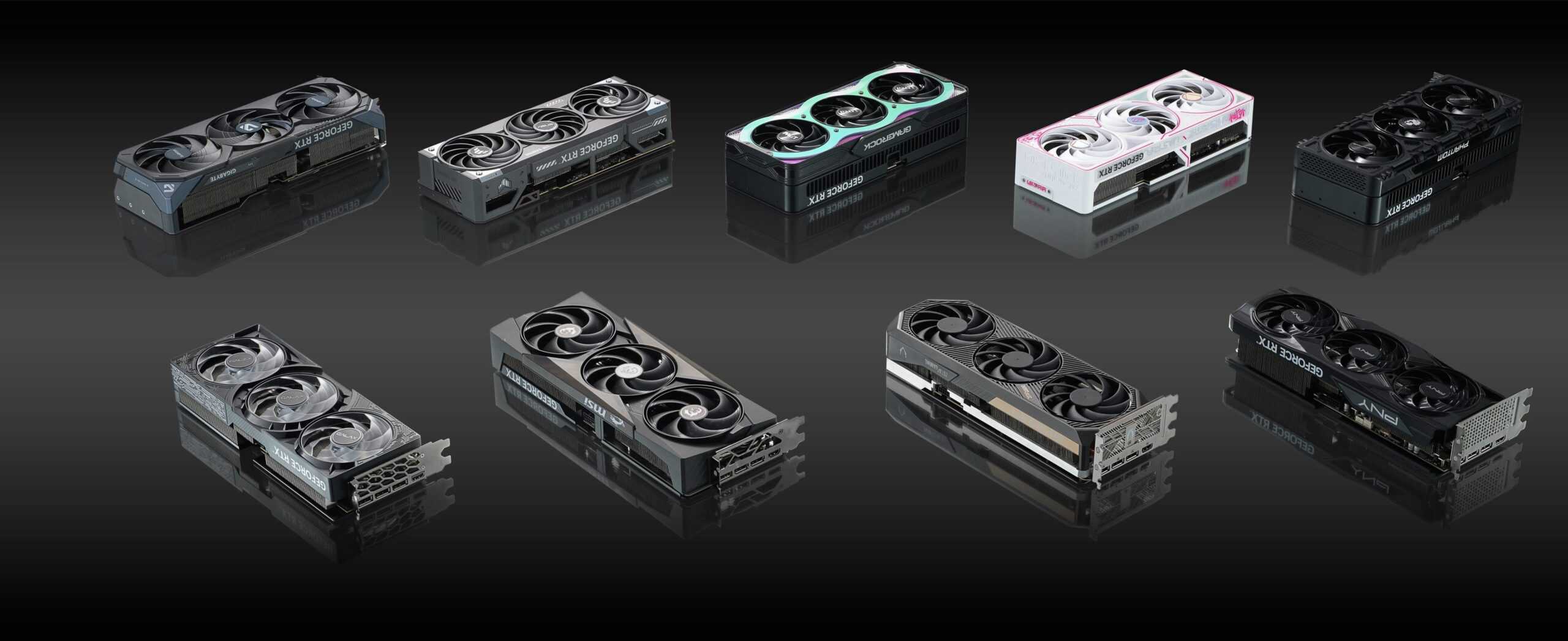The mid-range graphics card market is becoming competitive with the anticipated launch of AMD’s RX 9070 series, which aims to rival NVIDIA’s graphics card (referred to as RTX 5070). The RX 9070 is expected to be priced around $499, while the RX 9070 XT may be around $599, undercutting the RTX 5070, which launched at $549. AMD’s new cards are rumored to feature the RDNA 4 architecture, offering better ray tracing capabilities compared to NVIDIA’s Ada Lovelace architecture used in RTX 5070.
Power consumption is also a consideration, with the RTX 5070 consuming about 200W. The success of the RX 9070 series could significantly impact AMD’s market share and reputation in the gaming community, making the upcoming launch critical for its future in the GPU market. This article will analyze the specifications and performance of both series to aid consumers in their decision-making.
AMD RX 9070 Pricing and Performance Compared to the RTX 5070

RX 9070 Expected Specifications and Price
The AMD RX 9070 is anticipated to be a strong competitor in the mid-range graphics card market. It is expected to use AMD’s RDNA 4 architecture. This new architecture promises better performance than previous generations. Early rumors suggest two main versions: the RX 9070 and the RX 9070 XT. The XT version will likely have more processing power.
Pricing is a key factor in the mid-range market. Leaks point to the RX 9070 costing around $499. The more powerful RX 9070 XT may be around $599. These prices are designed to compete directly with NVIDIA’s offerings. However, the exact pricing and release date are not confirmed by AMD.
RTX 5070 Specifications and Price
NVIDIA’s RTX 5070 is also a major player in this segment. It uses NVIDIA’s Ada Lovelace architecture. This architecture offers good performance and features like DLSS 3. This technology can greatly improve game frame rates. The RTX 5070 has a launch price of $549. This puts it in direct competition with the rumored pricing of the RX 9070 series.
Performance Comparison
Direct performance comparisons are difficult before official benchmarks are released. However, we can look at the expected specifications. The RX 9070 series is expected to improve in ray tracing performance. This is an area where NVIDIA has traditionally held an advantage. The RTX 5070 is known for its strong performance in both standard gaming and ray tracing.
The actual performance will depend on various factors. These include game optimization and driver updates. Both AMD and NVIDIA regularly release updates that can improve performance.
Pros and Cons
Here’s a table summarizing the main pros and cons of each card based on current information:
| Feature | AMD RX 9070 (Expected) | NVIDIA RTX 5070 |
|---|---|---|
| Price (Expected) | $499 (RX 9070) $599 (RX 9070 XT) | $549 |
| Architecture | RDNA 4 | Ada Lovelace |
| Ray Tracing | Improved over previous AMD generations | Strong performance, DLSS 3 available |
| Availability | Unconfirmed | Available |
| Power Consumption | Unknown | Around 200W |
Which Card Should You Choose?
Choosing between the RX 9070 and the RTX 5070 depends on your needs and budget. If the rumored pricing for the RX 9070 holds true, it could offer great value for the price. If ray tracing is a top priority, the RTX 5070 with DLSS 3 could be the better choice. It is important to wait for independent benchmarks once the RX 9070 is released. These benchmarks will give a clearer picture of the actual performance of each card.
Considerations for Upgrading
If you are thinking of upgrading your graphics card, consider your current system. Make sure your power supply is strong enough for the new card. Check if your CPU will limit the performance of the new GPU. If you have an older CPU, you might need to upgrade that as well to get the best performance.
Alternatives in the Market
Besides the RX 9070 and RTX 5070, there are other options in the mid-range market. Older generation cards like the RTX 3070 and RX 6700 XT can still offer good performance at lower prices. It is worth considering these if you are on a tighter budget. However, keep in mind that these older cards will not have the latest features or performance improvements.
Power Consumption and Efficiency
Power consumption is another important factor. NVIDIA has published the RTX 5070’s typical board power as around 200W. AMD has not yet released power consumption figures for the RX 9070 series. Lower power consumption can mean lower electricity bills and less heat generated by your computer.
The Importance of Drivers and Software
Both AMD and NVIDIA provide software and driver updates for their graphics cards. These updates can improve performance and fix bugs. It is important to keep your drivers up to date for the best experience. NVIDIA provides GeForce Experience, which helps with driver updates and game optimization. AMD has its Adrenalin software suite, which offers similar features.
The mid-range graphics card market is very competitive. The RX 9070 and RTX 5070 both offer strong performance for the price. The best choice depends on individual preferences and needs. Waiting for independent benchmarks and reviews after the RX 9070 launch will provide the most complete information.
The graphics card market is always moving forward. New technologies and architectures are constantly being developed. This means that the best choice for a graphics card can change quickly. It is important to stay informed about the latest developments to make the best decision for your needs.
The mid-range graphics card market is a good place to be for gamers who want good performance without spending too much. Both AMD and NVIDIA are offering competitive products in this segment. The RX 9070 and RTX 5070 are expected to provide excellent gaming experiences at 1080p and 1440p resolutions. They will also be capable of handling some ray tracing effects, though top-end ray tracing performance will still be found in higher-end cards.
The release of new graphics cards also often affects the prices of older cards. This can be a good time to find deals on previous generation GPUs. If you don’t need the absolute latest technology, you can often find good value by buying a slightly older card.
Short Summary:
- Pricing leaks suggest that the RX 9070 XT will be competitively priced at approximately $479.
- Nvidia’s RTX 5070 is priced at $549, raising the stakes for AMD’s strategy.
- Retail relationships and pricing strategies are critical as AMD seeks to establish its GPUs in the competitive market.
As AMD gears up for the launch of its highly awaited Radeon RX 9070 series, the tech community is buzzing with speculation regarding pricing, performance, and market strategy. With Nvidia’s RTX 5000 series making a significant impact, AMD has found itself in a pricing dilemma that could significantly affect its market standing. Initial pricing leaks suggest that the Radeon RX 9070 XT, a flagship model, might be priced at around $479, potentially undercutting Nvidia’s RTX 5070 priced at $549. However, these figures remain unconfirmed as AMD navigates negotiations with retailers that could determine the fate of its upcoming GPUs.
Details on Pricing Leaks
The information regarding AMD’s pricing strategy comes primarily from community forums, including Chiphell. One user claimed that the reference model for the RX 9070 XT would start at $479. This basic version typically offers straightforward cooling solutions that many gamers prefer to upgrade through third-party options. However, this pricing aligns closely with another leak showing that more feature-rich models, or AIB (Add-In Board) cards, could be found at significantly higher prices.
For instance, an online leak from a Philippine retailer has indicated that a premium model, specifically the Gigabyte Gaming OC version, could retail at approximately 35,000 Pesos, translating to around $512, likely pushing closer to $600 once taxes are factored in.
AMD’s Competitive Edge
AMD’s pricing strategy is particularly crucial given Nvidia’s recent announcements. Nvidia CEO Jensen Huang recently unveiled the GeForce RTX 5070 during his keynote speech at CES in Las Vegas, sitting at $549. Additionally, the upcoming RTX 5070 Ti is slated for $749, further establishing Nvidia’s foothold in the mid-range GPU market.
Both companies have emphasized that their cards are targeting mid-range users rather than going head-to-head with each other’s flagship models. AMD’s newly revealed RX 9000 RDNA 4 cards seem aimed at competing with the likes of the RTX 4070 Ti without exceeding the performance benchmarks established by their predecessors. Nevertheless, some performance leaks suggest that the RX 9070 XT may rival or even surpass the RTX 4080 Super in specific tests, a revelation that raises hopes for AMD enthusiasts regarding potential performance-to-price ratios.
“If AMD can deliver performance that exceeds expectations and maintain aggressive pricing, it will make waves in the mid-range GPU market,” said an industry analyst, highlighting the pressure on AMD.
Market Share and Strategy
AMD’s overarching strategy seems clear: to gain market share by offering competitively priced graphics cards against Nvidia’s offerings. The company’s efforts to introduce FSR 4, a technology akin to Nvidia’s DLSS that promises improved frame rates, could further bolster its position in the market. The ability to deliver smooth 4K gaming experiences with the RX 9070 XT would be a pivotal factor in enticing consumers.
However, reports of internal conflicts regarding pricing negotiations with retailers hint at potential challenges. AMD is reportedly grappling with high initial price points that do not align with the expectations set by Nvidia’s recent competitive pricing. Pokerclock, a moderator at PC Games Hardware, shared insights into this situation, indicating, “There is no agreement on the price at which these graphics cards should be sold. The originally planned price range appears to have been set far too high.” This friction could stall the launch of the RX 9070 cards indefinitely if not resolved promptly.
“The pricing quagmire AMD currently finds itself in is putting its Radeon RX 9070 launch in jeopardy,” Pokerclock further noted. “Retailers are unhappy as they face liquidity issues due to delayed cashback payments from AMD.”
Launch Delays and Retail Dynamics
Interestingly, while photos of the RX 9070 cards have surfaced online, the lack of an official announcement has left many gamers in limbo. Newly surfaced models have reached retailers, yet official prices and release dates remain uncommunicated. The delays have incited concerns regarding AMD’s commitment to ensure retailers are not left in unfavorable positions. Suggestions indicate that AMD may mitigate any potential losses by offering cashback or marketing agreements to bridge the pricing gap.
However, as the company navigates these challenging waters, it must focus on enhancing key technical attributes that might attract consumers to its products over Nvidia’s. With gaming technology evolving rapidly, AMD’s success hinges on the effective integration of advanced features like ray tracing and support across numerous titles for its FSR technology.
“For AMD to maintain a competitive edge, they must not only price their products aggressively but also ensure they offer compelling tech features that can hold their own against Nvidia,” stated an industry expert.
The Road Ahead for AMD
Looking ahead, the stakes are high for AMD as it positions itself against a backdrop of increasing competitive pressure. Both manufacturers have their eye on an expanding market, and decisive action will be required from AMD to ensure that the RX 9070 series does not flounder due to pricing missteps. This performance-to-cost dynamic will indeed be a determining factor in the success of AMD’s products as the launch date approaches.
Investors and consumers are eagerly awaiting clearer indications from AMD about the expected pricing structure. Many believe that a price point below $549 for the RX 9070 XT would finally create a strong competitive stance against the RTX 5070, provided performance figures remain promising as indicated by early benchmarks.
As we await more definitive details, the tech community’s curiosity remains piqued. True to its reputation, AMD must act quickly to clarify its stance on pricing and performance to stave off the growing market dominance that Nvidia is likely to enjoy with its RTX 5000 series.







